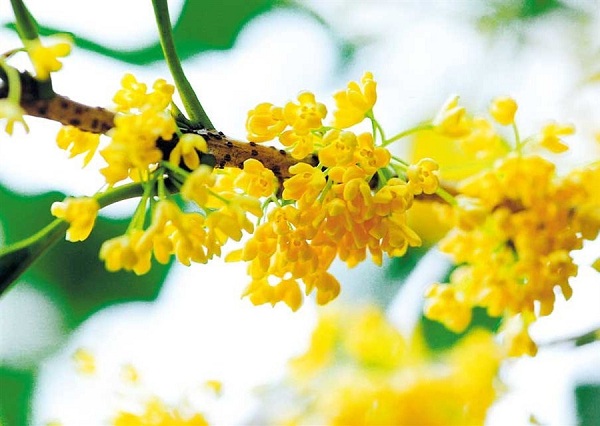Delightful colors and the scents of autumn
 0 Comment(s)
0 Comment(s) Print
Print E-mail Shanghai Daily, October 26, 2016
E-mail Shanghai Daily, October 26, 2016
|
Guihua Village |
Autumn around Hangzhou is known for its kaleidoscope of colors. Gingko, maple, sunflowers, persimmon fruit and phoenix trees paint the hills a mix of yellow, orange, red and gold. The sight of the colorful leaves against a clear blue sky is one of autumn's great charms in Zhejiang Province.
This beautiful combination of colors only lasts a couple of weeks or so. Shanghai Daily explores four places where people can take a stroll down sun-dappled paths.
Shilin Village
Autumn is the best time to savor persimmon. This fruit usually grows in northern China, but can also be found in Zhejiang Province. Shilin Village in Ningbo is noted for yummy persimmons that taste soft and mellow.
The village is situated in Danshan Chishui Scenic Area, and is surrounded by mountains and covered with lush vegetation.
Shilin is a traditional ancient village, where there are many antique buildings dating to the Ming (1368-1644) and Qing (1644-1911) dynasties. Today, villagers surnamed Shen still dominate the place. According to historical documents, they are offspring of the imperial family of Zhou Dynasty (c.11th century-476 BC).
However, what attract sightseers most are not the historic architecture, but the red succulent persimmons in autumn. They hang from trees and look like small lanterns, adding a poetic ambience to the tranquil village.
Locals pick them from trees and sell them from roadside stalls, offering visitors the chance to savor an authentic autumn flavor. Still hungry? Family-run eateries offer low-price but savory local cuisine.
How to get there: G92 Expressway—213 Provincial Road—Yuyao Hutong exit
Dipu Village
The town is based along the border of Fuyang and Tonglu counties. Its history dates back hundreds of years, started by the Shentu family that lived there during the Southern Song Dynasty (1127-1279).
The town still looks like a remnant from the past, with its antique bridges, temple, ancestral halls and other architectural structures with their carved beams and painted rafters.
To some extent, Dipu's buildings represent traditional Hui-style architectures, but some parts also symbolize classical Chinese wood carving techniques by virtue of the sophisticated sculptures on beams, rafters, eaves and furniture. Their interior wooden decoration is based on mythical creatures and auspicious patterns.
Every autumn, the village is covered with vibrant yellow sunflowers that emit a feeling of hope and vigor. Tourists flock to Dipu to enjoy such early autumn vistas.
Since so many people come to village to see the sunflowers, villagers are setting up "happy farmhouses," that provide simple food and accommodation. Visitors can also pick their own fruit and vegetables, and even cook it themselves in village-style kitchen stoves.
How to get there: G25 Expressway-—Shen'ao exit






